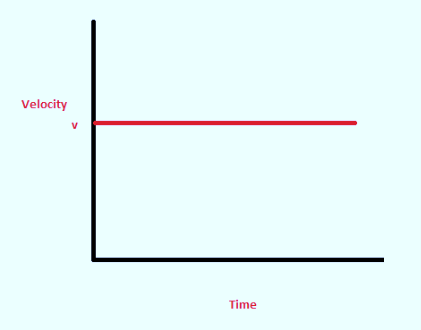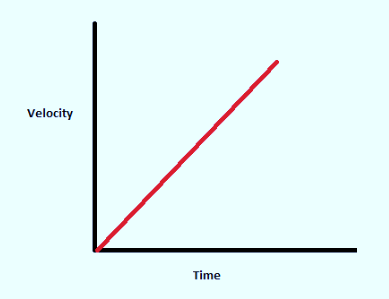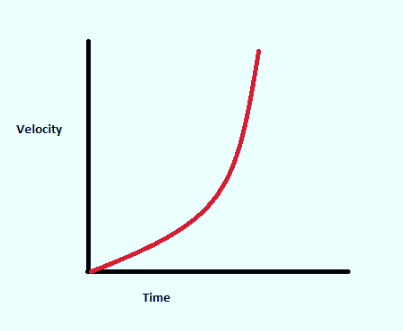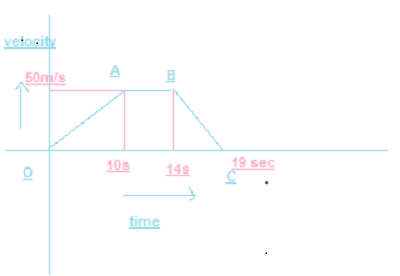Velocity Time Graphs - Definition, Example, FAQs
Here, in this article, we will learn about the velocity time graph/vt graph, vt meaning, velocity time, what is velocity time graph, when the acceleration of a particle is increasing linearly, how to draw velocity time graph, what velocity time graph gives, velocity time graph examples, velocity time relation, velocity vs time graph/velocity versus time graph, constant velocity graph, study the velocity time graph and calculate acceleration, what we studied about velocity time graph class 9, the velocity time graph of a particle, velocity graph, velocity time graph acceleration, how to find acceleration in velocity time graph, zero acceleration graph, the velocity displacement graph of a particle, what does velocity time graph represent etc.
JEE Main/NEET 2027: Physics Important Formulas for Class 10
NEET 2025: Mock Test Series | Syllabus | High Scoring Topics | PYQs
JEE Main: Study Materials | High Scoring Topics | Preparation Guide
JEE Main: Syllabus | Sample Papers | Mock Tests | PYQs

What is the Velocity time graph?
A velocity-time graph represents the different velocities of a moving object at different times. We can say that when an object moves with a speed in a particular direction, it is the velocity of that object. Velocity is a vector quantity as it has both direction and magnitude. The velocity-time graph gives the acceleration of an object. We know that acceleration is the rate of change of velocity. The vertical axis of the velocity-time graph is taken as the velocity of the object and horizontal axis as the time elapsed.
On the velocity- time graph, we get different types of acceleration. An object may have a constant velocity, increasing velocity, or decreasing velocity and it can easily be determined whether the object is accelerating, decelerating, or not accelerating at all.
If an object moves with a constant velocity, then we obtain a straight horizontal line on the graph. It means that there is no change in the velocity and as a result, we get no acceleration or zero acceleration.
If an object moves with an increasing velocity or constant acceleration, then we get a straight sloped line on the graph. Here, in this case the acceleration of a particle is increasing linearly.
If an object moves with an increasing acceleration, then we get curved lines.
Also read -
- NCERT Solutions for Class 11 Physics
- NCERT Solutions for Class 12 Physics
- NCERT Solutions for All Subjects
Let us study these cases one by one.
Case I:- Constant velocity graph or No Acceleration graph
If the object moves with constant velocity, it means that the initial and final velocity of the object remains the same. The slope obtained in this case will be constant. It leads us to conclude that there is no increase or no decrease in the acceleration of the object and the object will have zero acceleration in this case.
The following VT graph shows zero acceleration.

Case II:- Increasing Velocity or Constant Acceleration
If the velocity of an object increases throughout its motion, then the final velocity becomes more than the initial velocity. The initial velocity, in this case, can be zero, as the object is constantly increasing its speed. The slope of the velocity-time graph obtained in this case will increase. It leads us to conclude that the body is in constant acceleration.
The following VT graph shows constant acceleration.

Also Read:
- NCERT solutions for Class 11 Physics Chapter 3 Motion in a straight line
- NCERT Exemplar Class 11 Physics Solutions Chapter 3 Motion in a straight line
- NCERT notes Class 11 Physics Chapter 3 Motion in a straight line
Case III:- Increasing rate of change of velocity or Increasing acceleration
If the rate of change of velocity increases throughout the motion, then the final velocity will be much more than the initial velocity. The initial velocity in this case can be zero as the acceleration of the object is increasing every second at some rate. The slope of the velocity-time graph in this case will lead us to conclude that the graph will form a curve. Hence, the curve in this slope has increasing/decreasing acceleration.
The following VT graph shows increasing acceleration.

We can obtain a decreasing velocity-time graph similar to the increasing velocity-time graph. In this case the slope will decrease as the velocity is decreasing. Here, in this case we will get a negative slope and the acceleration will be decreasing.
Related Topics Link, |
Velocity time graph questions for class 9
Q.1 A particle starts from rest and moves with a uniform acceleration of 5m/s2 for 10s and then it moves with a constant velocity for 4s. Later it slows down and comes to rest in 5s. Draw the velocity graph for the motion of the body and answer the following questions:
a. What is the maximum velocity attained by the body?
b. What is the distance travelled during this period of acceleration?
c. What is distance travelled when the body is moving with constant velocity?
d. What is the retardation of the body while slowing down?
e. What is the distance travelled by retarding?
f. What is the total distance travelled?
Solution)

(a) Maximum velocity will be reached when acceleration is stopped at the end of the first 10 sec and is shown in graph
V = 50 m/s
(b) Distance is given by the area of the graph enclosed till 10 sec
s = (1/2) X 50 X 10 = 250 m
(c) distance travelled when the body was moving with constant velocity is given by the enclosed graph from A to B
= 4 X 50 = 200m
(d) Retardation is given by the slope of the curve from B to C
A = (0-50)/5 = - 10 m/s2
(e) Distance = (1/2) X 50 X 5 =125m
(f) Total distance is given by the total area of the graph = 250 + 200 + 125 = 575 m
Also check-
- NCERT Exemplar Class 11th Physics Solutions
- NCERT Exemplar Class 12th Physics Solutions
- NCERT Exemplar Solutions for All Subjects
NCERT Physics Notes:
Frequently Asked Questions (FAQs)
A velocity-time graph represents the different velocities of a moving object at different times.
The velocity time graph represents acceleration as we know that the rate of change of velocity gives us acceleration.
When the velocity is constantly increasing, we get constant acceleration in that case.
Also Read
22 Jun'25 04:12 PM
05 Feb'25 04:57 PM
11 Jan'25 03:00 PM
24 Dec'24 01:28 PM
27 Nov'24 01:02 PM
26 Nov'24 01:31 PM
20 Nov'24 04:50 PM
20 Nov'24 12:59 PM
16 Nov'24 01:06 PM
14 Nov'24 04:17 PM

